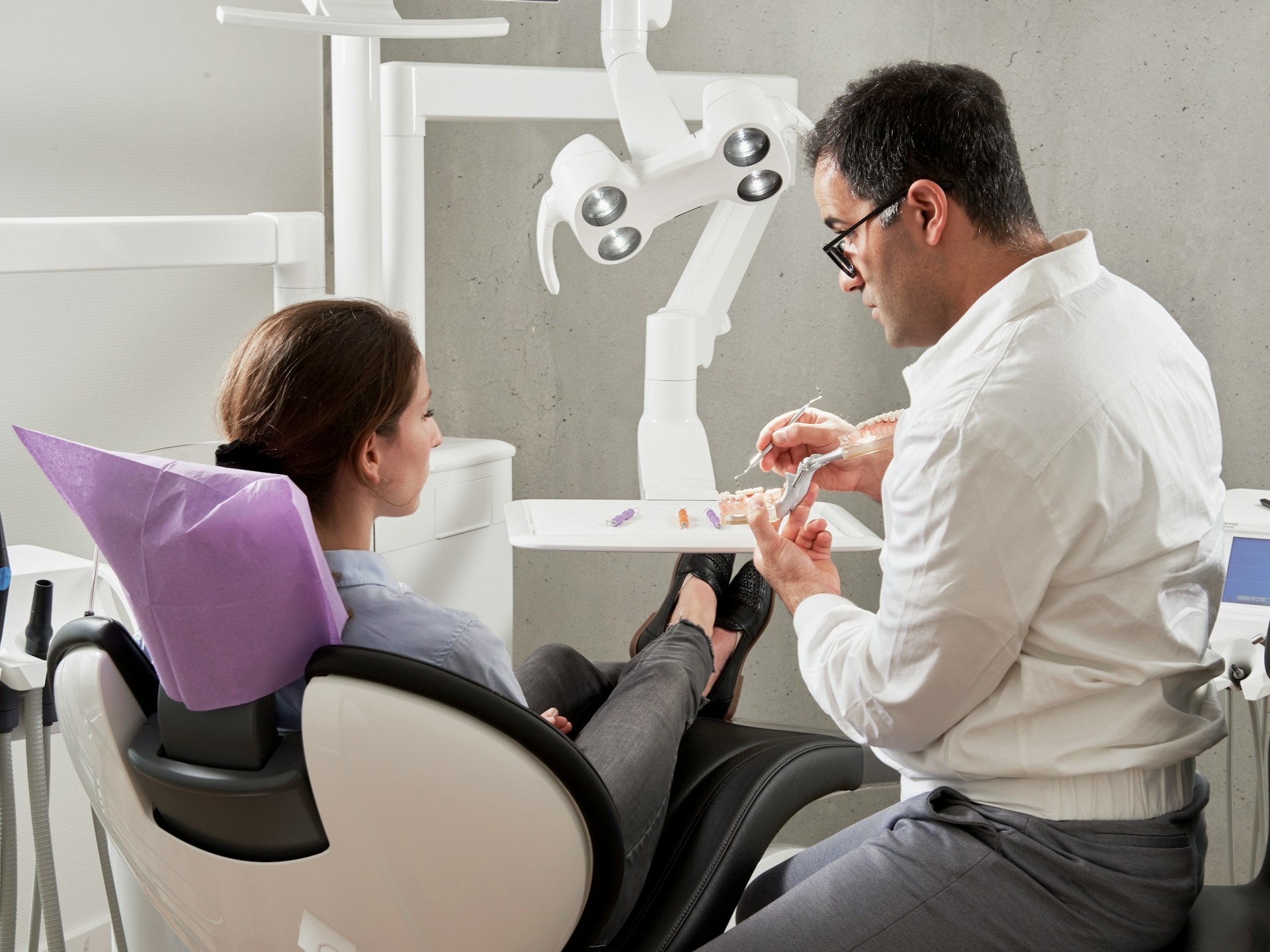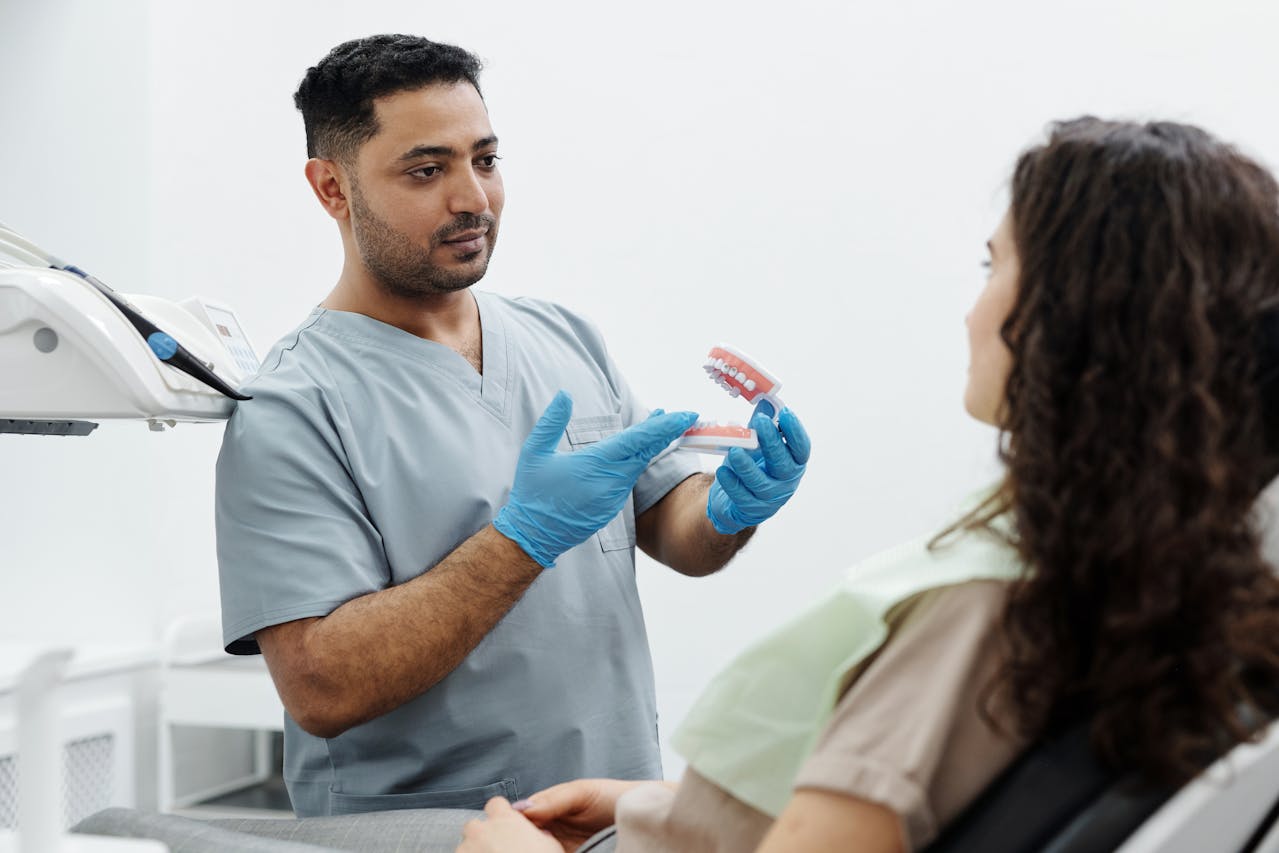How to Support Diverse Patient Needs with AI-Powered Communication

Communication failures in healthcare contribute to over 60% of hospital adverse events and nearly 2,000 preventable deaths annually—a crisis that demands innovative solutions. For dental practices specifically, missed calls and communication barriers translate directly to empty chairs and lost revenue. AI-powered communication tools like Arini's AI receptionist platform offer a promising path forward, providing 24/7 accessibility while addressing language barriers, health literacy challenges, and accessibility needs that traditional phone systems cannot meet.
Key Takeaways
- Communication failures cause 60% of hospital adverse events and $1.7 billion in malpractice costs annually
- One in five Americans speaks a language other than English at home, creating significant healthcare access barriers
- AI translation tools achieve 97% accuracy for English-to-Spanish medical translations, making them viable for many healthcare communications
- 10% of the American population has disabilities affecting communication, requiring accessible technology solutions
- AI can reduce the reading levels of patient materials from 9.6-10.7 grade level to 5.6-7.6 grade level, improving health literacy
- Successful AI implementation requires balancing automation with human oversight and equity-focused design
Understanding AI-Powered Patient Communication in Modern Healthcare
AI-powered patient communication represents a fundamental shift from reactive to proactive healthcare engagement. Rather than patients waiting for office hours or navigating complex phone trees, AI systems provide immediate, intelligent responses to common inquiries while seamlessly connecting complex cases to human staff.
What AI-Powered Communication Means for Patient Care
At its core, AI-powered communication in healthcare leverages natural language processing (NLP) and conversational AI to understand and respond to patient needs in human-like dialogue. These systems go beyond simple keyword matching to comprehend context, intent, and nuance in patient communications.
For dental practices, this means an AI receptionist can handle routine tasks like:
- Answering questions about office hours, insurance accepted, and directions
- Scheduling new and returning patient appointments directly into practice management systems
- Providing after-hours emergency guidance
- Sending appointment reminders via preferred communication channels
This 24/7 patient access ensures no patient call goes unanswered, converting what would be missed opportunities into booked appointments.
Key Technologies Enabling AI Patient Engagement
Modern healthcare AI communication relies on several key technologies working in concert:
- Natural Language Processing (NLP): Enables AI to understand and generate human-like responses to patient inquiries
- Machine Learning: Allows systems to adapt and improve based on practice-specific workflows and patient interactions
- Secure API Integrations: Connect AI systems directly to practice management software like OpenDental, Dentrix, and EagleSoft
- Voice and Text Interfaces: Provide multiple channels for patient engagement based on preference and accessibility needs
- HIPAA-compliant Infrastructure: Ensures all patient data remains secure and private throughout interactions
These technologies combine to create a seamless patient experience that feels personal and responsive while maintaining the highest standards of data security and compliance.
The Growing Need for Diverse Patient Communication Solutions
Healthcare demographics have shifted dramatically in recent decades, creating communication challenges that traditional phone systems cannot address. Dental practices serving diverse communities face unique barriers that impact patient satisfaction, treatment adherence, and practice growth.
Demographic Shifts Driving Communication Needs
The U.S. healthcare landscape reflects increasing diversity across multiple dimensions:
- Language diversity: One in five people speaks a language other than English at home
- Health literacy gaps: Approximately 20% of U.S. adults read at or below a 5th-grade level
- Disability considerations: 10% of Americans have disabilities affecting communication
- Digital divide: Technology access and usage vary significantly by socioeconomic status, creating disparities in telehealth adoption
These demographic realities mean that one-size-fits-all communication approaches inevitably exclude significant patient segments.
Common Communication Barriers in Healthcare Settings
Dental practices encounter several specific communication barriers that impact patient care and practice efficiency:
- Language Barriers Patients with Limited English Proficiency (LEP) face significant healthcare disparities. They are over three times more likely to be uninsured and experience reduced access to care, fewer preventive services, and higher rates of medical errors.
- Health Literacy Challenges Most patient education materials exceed the recommended 6th-grade reading level, creating comprehension gaps. This is particularly problematic in dental care, where treatment plans and home care instructions require a clear understanding for proper adherence.
- Accessibility Limitations Traditional phone systems and websites often lack accessibility features needed by patients with visual, auditory, motor, or cognitive disabilities. This creates barriers to care for nearly 1 in 4 Americans with communication-related disabilities.
- After-Hours Access Gaps Dental emergencies and appointment scheduling needs don't conform to business hours. Missed after-hours calls represent lost revenue and patient frustration, with studies showing 37% of adults used telemedicine in the past year, creating expectations for 24/7 digital access.
How AI Healthcare Companies Are Transforming Patient Access
Specialized AI healthcare companies are addressing these communication challenges through purpose-built platforms that integrate seamlessly with existing healthcare workflows while providing unprecedented accessibility.
The Role of Specialized AI Platforms in Healthcare
Unlike general-purpose AI assistants, healthcare-specific AI platforms understand the unique requirements of medical and dental workflows. These specialized platforms offer:
- Domain-specific training on medical and dental terminology
- Integration capabilities with healthcare-specific software systems
- Compliance with healthcare regulations like HIPAA
- Customizable workflows that mirror individual practice protocols
- Security measures designed for protected health information
For dental groups and DSOs, this specialization is crucial. Generic AI solutions cannot handle the complex scheduling rules, insurance verification processes, and treatment coordination that dental practices require.
Integration Capabilities That Matter
The true value of AI healthcare platforms lies in their ability to integrate with existing practice infrastructure. Arini's AI Receptionist Platform demonstrates this through:
- Seamless PMS Integration: Direct connectivity with OpenDental, Dentrix, EagleSoft, and Denticon allows real-time appointment booking and patient record access
- Multi-Location Support: DSOs can manage multiple locations through a single platform with location-specific routing rules
- Phone System Compatibility: Works with most dental office phone systems without requiring expensive hardware changes
- Customizable Call Flows: Practices can design call logic that matches their specific workflows and patient communication protocols
This integration capability transforms AI from a standalone tool into an active member of the practice team, working alongside human staff to improve patient access and operational efficiency.
Real-World AI in Healthcare Examples: Solving Communication Challenges
AI-powered communication isn't theoretical—it's delivering measurable results in real healthcare settings, particularly in dental practices where communication directly impacts appointment scheduling and revenue.
Automating Appointment Scheduling Across Patient Types
Arini's Call Answering & Scheduling Module addresses one of the most common communication challenges in dental practices: converting incoming calls into booked appointments. The system handles diverse patient types through:
- New Patient Intake: Collects necessary information and schedules appropriate appointment types based on patient needs
- Returning Patient Scheduling: Accesses patient history to suggest appropriate appointment types and providers
- Emergency Triage: Identifies urgent cases and provides appropriate guidance or immediate scheduling
- After-Hours Coverage: Maintains appointment booking capabilities even when the office is closed
This automation ensures that every call results in either a booked appointment or appropriate information delivery, eliminating the patient frustration that comes from unanswered calls or complex voicemail systems.
Handling FAQs for Patients with Varying Health Literacy
The Patient FAQ & Communication Module addresses health literacy challenges by providing consistent, accurate information in accessible language. Common dental practice FAQs handled include:
- Insurance coverage and payment questions
- Office hours and location information
- Treatment explanations and preparation instructions
- Post-operative care guidance
- Cancellation and rescheduling policies
By providing this information consistently and in plain language, the system reduces the burden on front-desk staff while ensuring patients receive accurate information they can understand and act upon.
Key Benefits of AI in Healthcare for Patient Communication
The benefits of AI-powered patient communication extend beyond convenience to measurable improvements in patient outcomes, practice efficiency, and financial performance.
Measurable Outcomes: From Call Metrics to Revenue Impact
Dental practices implementing AI receptionist technology report significant measurable improvements:
- Missed Call Reduction: Reduction in missed calls, ensuring no patient inquiry goes unanswered
- Revenue Impact: Case studies show $56K+ in new revenue in 30 days and $100K+/month uplift with 24% profit increase
- Appointment Conversion: Higher conversion rates from calls to booked appointments through immediate response and seamless scheduling
- Staff Efficiency: Reduced time spent on routine calls allows front-desk staff to focus on complex patient needs and in-office patient experience
Arini's Analytics & Notifications Module provides real-time visibility into these metrics, allowing practices to track ROI and optimize their communication strategies continuously.
How AI Reduces Staff Burnout While Improving Service
Front-desk staff in dental practices often experience burnout from the repetitive nature of routine calls and the stress of managing high call volumes. AI receptionists address this by:
- Handling routine inquiries during peak call times
- Providing after-hours coverage without requiring staff overtime
- Reducing the cognitive load of managing multiple simultaneous tasks
- Allowing staff to focus on complex patient interactions that require human judgment and empathy
This role augmentation rather than replacement approach improves staff satisfaction while maintaining high service quality for patients.
Implementing Healthcare Technology for Multilingual Patient Populations
Language barriers represent one of the most significant communication challenges in modern healthcare, with one in five Americans speaking a language other than English at home.
Best Practices for Supporting Non-English Speaking Patients
Effective multilingual support requires more than simple translation—it demands cultural competence and accessibility considerations:
- Professional Translation Standards: AI translation tools should meet or exceed professional interpreter accuracy standards
- Cultural Context Awareness: Communication should account for cultural differences in health beliefs and communication preferences
- Multiple Language Support: Platforms should support the specific languages most common in the practice's patient population
- Human Escalation Pathways: Complex or sensitive discussions should have clear pathways to human interpreters when needed
Technology Requirements for Multilingual Communication
AI-powered translation technology has advanced significantly, with GPT-4 achieving 97% accuracy for English-to-Spanish medical translations and 95% for English-to-Chinese translations. These accuracy rates make AI translation viable for many healthcare communications, particularly for routine information sharing and appointment scheduling.
However, practices should implement clear protocols for when professional human interpreters are required, such as for complex treatment discussions, informed consent processes, or when patients specifically request human interpretation.
Patient Engagement Software That Adapts to Individual Needs
Effective patient communication requires personalization and adaptability to individual patient preferences, needs, and capabilities.
Customization Features That Support Diverse Needs
Arini's Integration & Workflow Customization Module enables practices to tailor communication approaches to their specific patient populations through:
- Customizable Call Flows: Design different call experiences for new vs. returning patients, emergency vs. routine calls, or different insurance types
- Location-Specific Routing: Multi-location practices can route calls appropriately based on patient location or provider availability
- Provider-Specific Rules: Different scheduling rules and availability windows for different providers within the same practice
- Patient Preference Tracking: Remember communication preferences and adjust future interactions accordingly
How AI Learns and Adapts to Your Patient Population
The Patient FAQ & Communication Module includes adaptive learning capabilities that improve over time:
- Knowledge Base Expansion: Add new FAQs and responses based on actual patient inquiries
- Response Optimization: Learn which responses are most effective for different patient types and communication styles
- Practice-Specific Customization: Adapt to the unique protocols, terminology, and workflows of each practice
- Continuous Improvement: Regular updates and refinements based on usage patterns and feedback
This adaptive learning ensures that the AI system becomes increasingly effective at meeting the specific needs of each practice's patient population over time.
Combining the Benefits of Telehealth with AI Communication Tools
The growth of telehealth has created new opportunities and challenges for patient communication, with 37% of U.S. adults using telemedicine services in the past year.
Streamlining the Telehealth Patient Journey with AI
AI communication tools can enhance telehealth experiences by:
- Pre-Visit Preparation: Providing patients with technical setup instructions and pre-visit questionnaires
- Appointment Scheduling: Coordinating telehealth appointments with appropriate providers and time slots
- Technical Support: Troubleshooting common technical issues patients encounter during telehealth visits
- Post-Visit Follow-up: Sending treatment summaries, medication instructions, and follow-up appointment reminders
This integration ensures that telehealth patients receive the same level of support and communication as in-person patients.
Reducing No-Shows Through Automated Telehealth Support
AI-powered communication can significantly reduce telehealth no-show rates through:
- Automated Reminders: Sending appointment reminders via preferred communication channels (text, email, or phone)
- Technical Check-ins: Proactively reaching out to ensure patients have the necessary technical setup
- Easy Rescheduling: Providing self-service options for patients who need to change their appointment time
- Emergency Coverage: Handling last-minute cancellations and filling slots with waitlisted patients
These automated support features help maintain high telehealth utilization rates while reducing administrative burden on staff.
Building an Accessible Telehealth Website Experience with AI Support
Website accessibility is critical for ensuring all patients can access healthcare information and services, particularly given that over 10% of Americans have disabilities affecting communication.
Accessibility Standards for Healthcare Websites
Healthcare websites must comply with accessibility standards, including:
- WCAG Compliance: Meeting Web Content Accessibility Guidelines for screen reader compatibility, keyboard navigation, and visual contrast
- ADA Requirements: Ensuring digital services are accessible to people with disabilities under the Americans with Disabilities Act
- Mobile Responsiveness: Providing accessible experiences across all device types and screen sizes
- Alternative Communication Channels: Offering multiple ways to access information and services
How AI Voice Agents Support Patients with Disabilities
Arini's AI Receptionist Platform provides voice-first communication that supports patients who may struggle with traditional web interfaces:
- Screen Reader Alternative: Voice communication provides an alternative for patients who find screen readers challenging to use
- Motor Disability Support: Patients with limited dexterity can communicate effectively through voice rather than typing
- Cognitive Accessibility: Natural language conversation can be easier to navigate than complex website menus for some patients
- Multimodal Options: Providing both voice and text options allows patients to choose their preferred communication method
This voice-first approach ensures that patients with various disabilities can access dental practice services without barriers.
Ensuring HIPAA Compliance and Security in AI Patient Communication
Patient data security is non-negotiable in healthcare AI applications, requiring robust compliance measures and security protocols.
What to Look for in HIPAA-Compliant AI Solutions
Healthcare practices should verify that AI communication platforms include:
- HIPAA Compliance Certification: Formal documentation of HIPAA compliance for all patient interactions
- Role-Based Access Controls: Ensuring only authorized personnel can access patient data
- Data Minimization Practices: Collecting only the patient information necessary for the specific communication purpose
- Secure API Integrations: Encrypted connections between the AI platform and practice management systems
- Transparent Trust Center: Clear documentation of data handling practices and security measures
Arini's AI Receptionist Platform meets these requirements through HIPAA-compliant infrastructure, secure PMS integrations, and transparent data handling practices documented in their Trust Center.
Security Standards Beyond HIPAA Compliance
Leading healthcare AI platforms are pursuing additional security certifications to demonstrate their commitment to data protection:
- SOC 2 Certification: Service Organization Control standards for security, availability, and confidentiality
- ISO 27001 Standards: International standards for information security management systems
- Regular Security Audits: Ongoing internal and external security reviews and penetration testing
- Staff Training: Comprehensive privacy and compliance training for all employees with access to patient data
These additional security measures provide practices with confidence that their patient data remains protected beyond basic HIPAA requirements.
Measuring Success: ROI and Patient Outcomes from AI Communication
The true value of AI-powered patient communication lies in measurable improvements to practice performance and patient outcomes.
Key Performance Indicators for AI Patient Communication
Dental practices should track several key metrics to evaluate AI communication effectiveness:
- Call Answer Rate: Percentage of inbound calls answered by the AI system
- Appointment Conversion Rate: Percentage of calls that result in booked appointments
- Missed Call Reduction: Decrease in unanswered calls compared to pre-AI implementation
- Patient Satisfaction Scores: Feedback on communication quality and accessibility
- Staff Time Savings: Reduction in time spent on routine calls and administrative tasks
- Revenue Impact: Additional production value from appointments booked through AI
Case Study Results: Revenue and Efficiency Gains
Real-world results from dental practices implementing AI receptionist technology demonstrate a significant impact:
- Kare Mobile: Achieved $56K+ in new revenue in 30 days through improved call handling and appointment booking
- Unified Dental Care: Reported $100K+/month revenue uplift and 24% profit increase with 80% reduction in missed calls
- Normandy Lake Dentistry: Eliminated after-hours call frustration while maintaining 24/7 appointment availability
These results demonstrate that AI-powered communication isn't just a technological upgrade—it's a strategic investment that drives measurable practice growth and operational efficiency.
Frequently Asked Questions
Q: How does AI-powered communication improve patient experience for diverse populations?
A: AI-powered communication improves patient experience by providing 24/7 access in multiple languages, simplifying complex medical information to appropriate reading levels, and offering voice-first interfaces that support patients with various disabilities. This ensures that patients with Limited English Proficiency, low health literacy, or communication-related disabilities can access healthcare services without barriers, leading to better appointment adherence, treatment compliance, and overall satisfaction.
Q: What security standards should AI healthcare communication platforms meet?
A: AI healthcare communication platforms must meet HIPAA compliance requirements for protected health information, including encrypted data transmission, secure storage, role-based access controls, and business associate agreements. Leading platforms also pursue additional certifications like SOC 2 and ISO 27001, conduct regular security audits, and maintain transparent trust centers documenting their data handling practices. Practices should verify these security measures before implementing any AI communication solution.
Q: Can AI communication tools handle patients who speak different languages?
A: Modern AI translation tools achieve high accuracy rates for major language pairs—97% for English-to-Spanish and 95% for English-to-Chinese translations—making them suitable for many healthcare communications. However, practices should implement clear protocols for when professional human interpreters are required, such as for complex treatment discussions, informed consent processes, or high-stakes medical communications. AI tools work best as supplements to, rather than complete replacements for, professional interpretation services.
Q: How much ROI can dental practices expect from AI receptionist technology?
A: Dental practices report significant ROI from AI receptionist technology, with case studies showing $56K+ in new revenue in 30 days and $100K+/month revenue uplift with 24% profit increase. The primary drivers of this ROI include an 80% reduction in missed calls, improved appointment conversion rates, reduced staff time spent on routine calls, and 24/7 appointment availability that captures after-hours inquiries. Individual results vary based on practice size, call volume, and implementation approach.
Q: How do AI platforms integrate with existing practice management systems?
A: Leading AI receptionist platforms like Arini integrate directly with major dental practice management systems, including OpenDental, Dentrix, EagleSoft, and Denticon through secure APIs. This integration enables real-time appointment scheduling directly into the practice's calendar, access to patient records for returning patient identification, and automatic notification of booked appointments to staff. The integration typically requires minimal setup and works with existing phone systems, avoiding expensive hardware changes or workflow disruptions.









